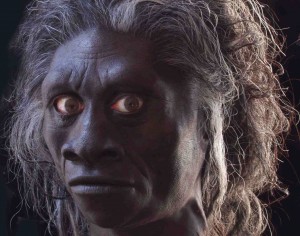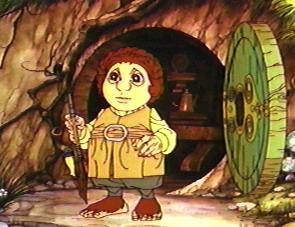The Little People
By:
May 19, 2009

THE LITTLE PEOPLE always have been with us.
Since 2004, human paleontologists have watched news emerging from the Indonesian island of Flores, where researchers discovered the bones of a small humanoid that lived in the archipelago as recently as 17,000 years ago, well after full-sized Homo sapiens arrived in the area.
But there’s been public controversy since the story broke — controversy that never erupts when paleontologists fight over, say, the systematics of the nematodes or the hydrodynamics of nautiloid shells.
Not everyone agrees that the remains of the creatures, dubbed Homo floresiensis by scientists but called “the hobbit” by a breathless press, represent a species distinct from modern humans. While its discoverers believe they’ve found a unique form of hominid, others argue that the bones belong to a human beset with microcephaly or dwarf cretinism.
As reported recently in the New York Times and elsewhere, the controversy continues. The various interpretations are plausible, and the debate is normative. Scientists squabble over this sort of thing all the time. It’s how knowledge — and careers — advance.
What’s different here? We’re talking about the Little People.

There’s much to be said about the notion of little people, the most famous fictional form of which inspired the popular name for the newly-discovered cave dwellers of Indonesia. J. R. R. Tolkien’s hobbits share etymological as well as folkloric roots with many other kinds of little people. Tolkien took his name, he said, from the Old English holbytla, a word for a hole-dweller. But British folklore had room for creatures called hobs, minor household gods who helped with farmwork, could cause mischief if crossed, and could be bought off with a freshly-made suit of clothes.

Of course, we’re just touching here on the endless fascination with the Little People. And it’s that perennial belief in fairies, pixies, elves, gnomes sprites, sidhe, and selkies, and not the public fascination with paleontology, that explains why the Homo floresiensis controversy gets covered here, here, and here (among many other places).
Even if the artist’s reconstruction of the extinct Hobbit of Flores (top of post) looks more like Gollum than dear old Bilbo.
But still, we haven’t explained the fascination with minor gods and hill-dwelling folk. Where does it come from? We may never know — unless a specimen of Homo floresiensis turns up in Oxfordshire.
MORE HILO SCIENCE FICTION: Radium Age Supermen | Radium Age Robots | Radium Age Apocalypses | Radium Age Telepaths | Radium Age Eco-Catastrophes | Radium Age Cover Art (1) | SF’s Best Year Ever: 1912 | Radium Age Science Fiction Poetry | Enter Highbrowism | Bathybius! Primordial ooze in Radium Age sf | War and Peace Games (H.G. Wells’s training manuals for supermen) | Radium Age: Context series | J.D. Beresford | Algernon Blackwood | Edgar Rice Burroughs | Karel Čapek | Buster Crabbe | August Derleth | Arthur Conan Doyle | Hugo Gernsback | Charlotte Perkins Gilman | Cicely Hamilton | Hermann Hesse | William Hope Hodgson | Aldous Huxley | Inez Haynes Irwin | Alfred Jarry | Jack Kirby (Radium Age sf’s influence on) | Murray Leinster | Gustave Le Rouge | Gaston Leroux | David Lindsay | Jack London | H.P. Lovecraft | A. Merritt | Maureen O’Sullivan | Sax Rohmer | Paul Scheerbart | Upton Sinclair | Clark Ashton Smith | E.E. “Doc” Smith | Olaf Stapledon | John Taine | H.G. Wells | Jack Williamson | Stanisław Ignacy Witkiewicz | S. Fowler Wright | Philip Gordon Wylie | Yevgeny Zamyatin
